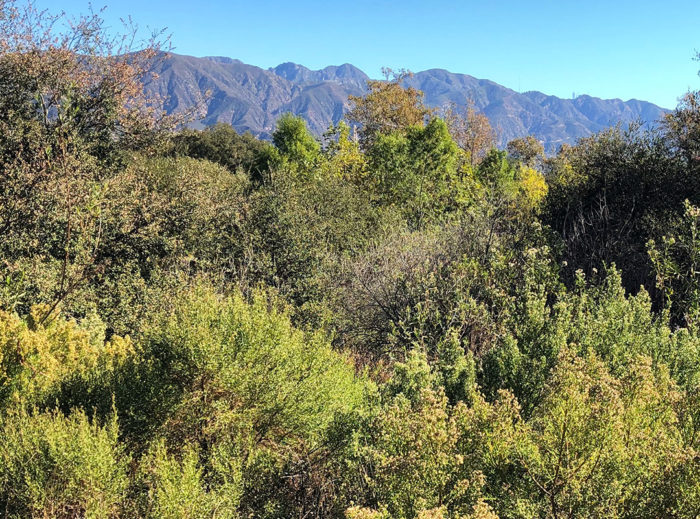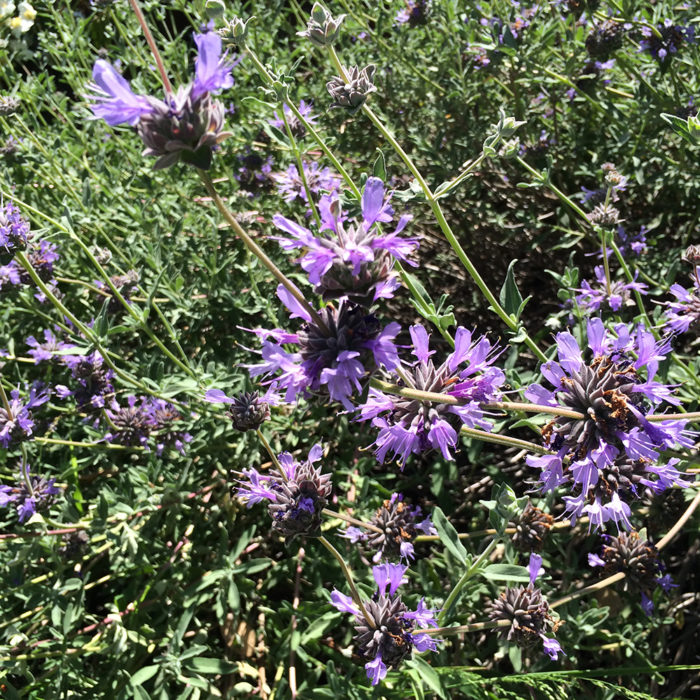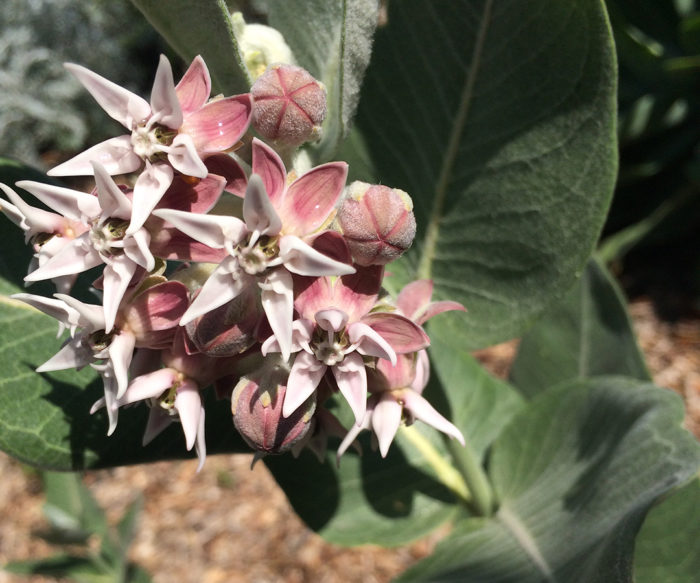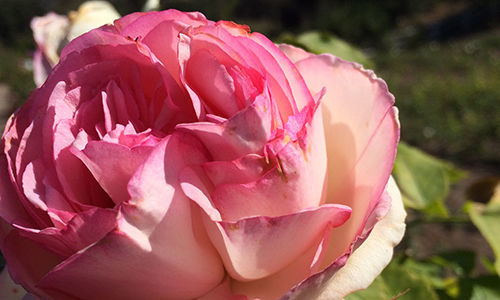
As the rains end and June gloom rolls by, things start to dry up in the garden, and many of your favorite drought-deciduous native plants, such as ‘Bee’s Bliss’ salvia (Salvia ‘Bee’s Bliss’, Zones 7–9), coast sunflower (Encelia californica, Zones 10–11), or ‘De La Mina’ verbena (Verbena lilacina ‘De La Mina’, Zones 7–10) start looking pretty dead. California native plants are either evergreen, drought deciduous, or winter deciduous. Most people are familiar with plants that are winter deciduous (trees that lose their leaves in winter, for example), but drought-deciduous plants can sometimes be confusing for the gardener. Here are some tips and tricks for dealing with drought-deciduous native plants.

Give them some moisture
Drought-deciduous natives lose their leaves in the dry season, usually late June through October, in order to protect themselves from the hot, dry weather. One way to keep them a bit less brown is to deeply water once every two weeks.
Plant an evergreen backdrop
If you have lots of deciduous natives in your garden, plant some strong, bright evergreen shrubs for contrast. Some of my favorite evergreen natives for the summer months are coyote bush (Baccharis pilularis, Zones 8–10), manzanita (Arctostaphylos spp. and cvs., Zones 2–9) and lemonade berry (Rhus integrifolia, Zones 8–10). Both manzanita and lemonade berry have the bonus of red tones to the bark, twigs, or leaves.

Do some judicious pruning
Summer is the dormant period for drought-deciduous plants, so another simple way to improve their aesthetic is to do some summer pruning. Sages in particular look much tidier in the hot months with a nice light pruning. Native salvias don’t like a heavy pruning (unlike their tropical cousins), so only cut back the spent flower heads to the first set of leaves. ‘De La Mina’ verbena can be deadheaded and cut a bit further back, and with a little extra water will stay green and bloom for most of the year. Native milkweeds (Asclepias tuberosa and cvs., Zones 3–9) can be cut down to the ground once they go dormant, and most regrow from the roots, rather than the stems.
Be patient
My last tip is more of a mental reminder: Although drought-deciduous natives may look a bit tired in the summer months, they do help create a lovely sense of seasonality, and anticipation, as they burst forth new green leaves every winter and lovely blooms in spring—making them a valuable asset despite their awkward phase in summer.
—Rachel Young is the former director of horticulture and garden operations at Descanso Gardens in La Cañada, California.


















Comments
Log in or create an account to post a comment.
Sign up Log in